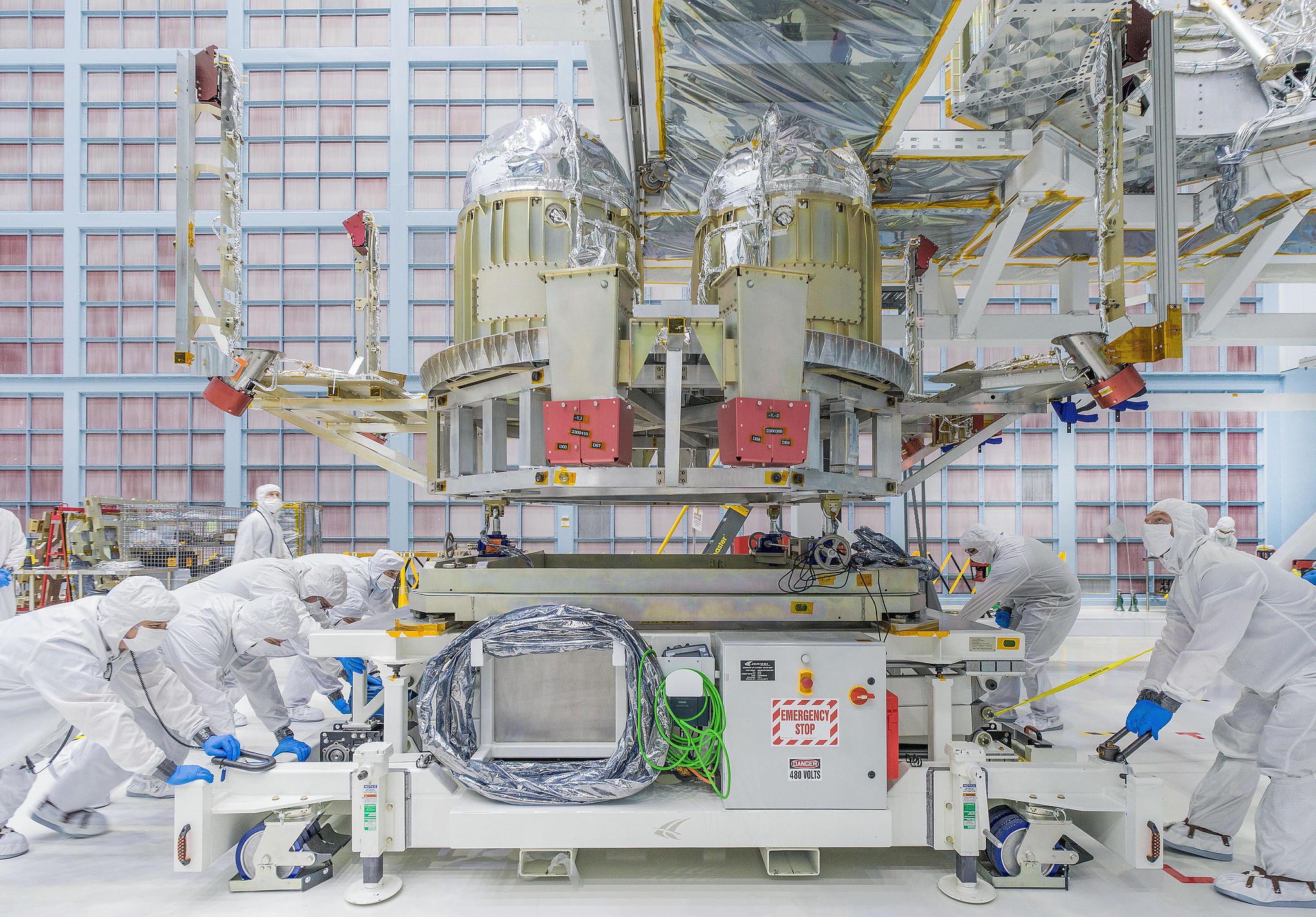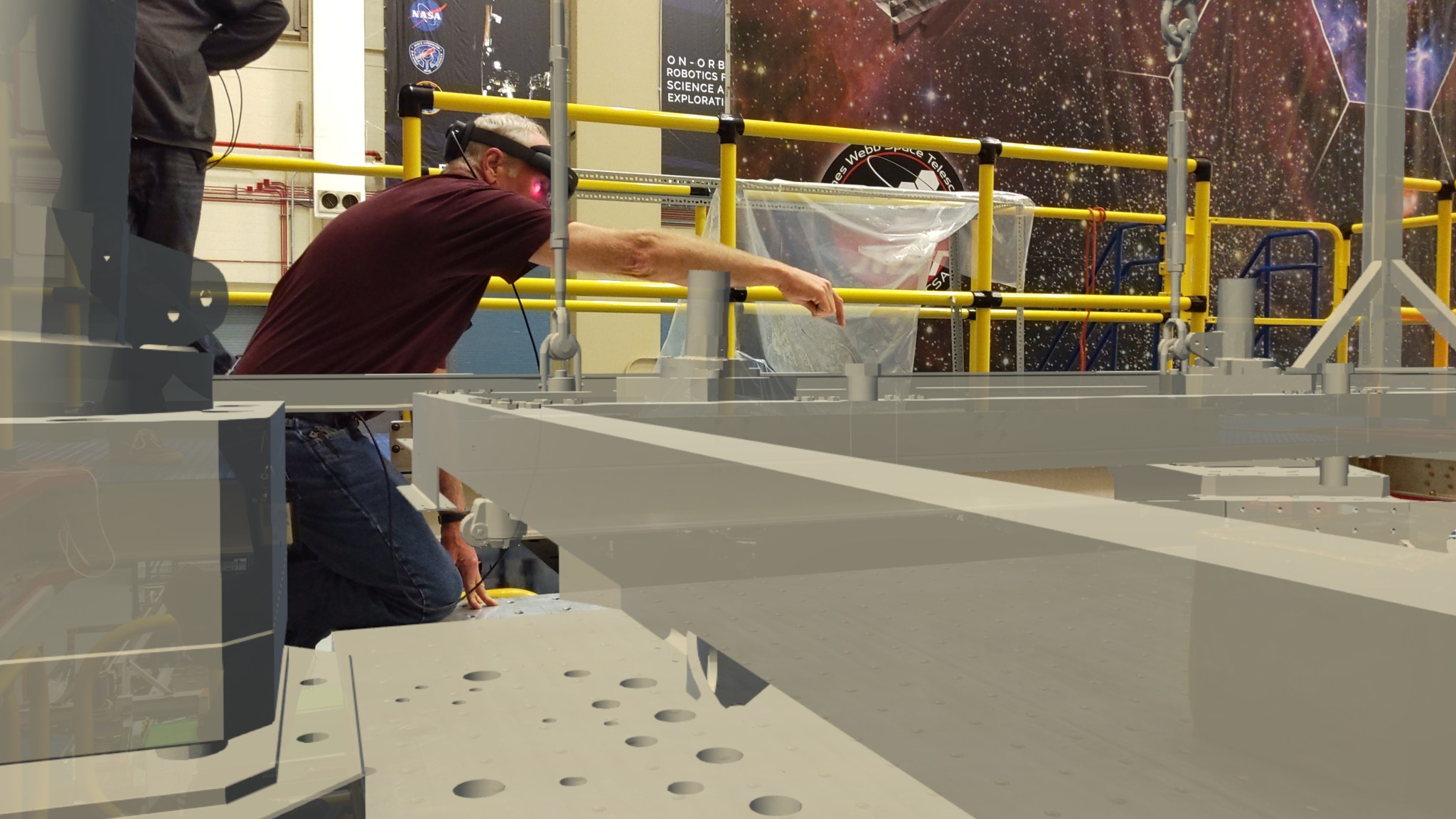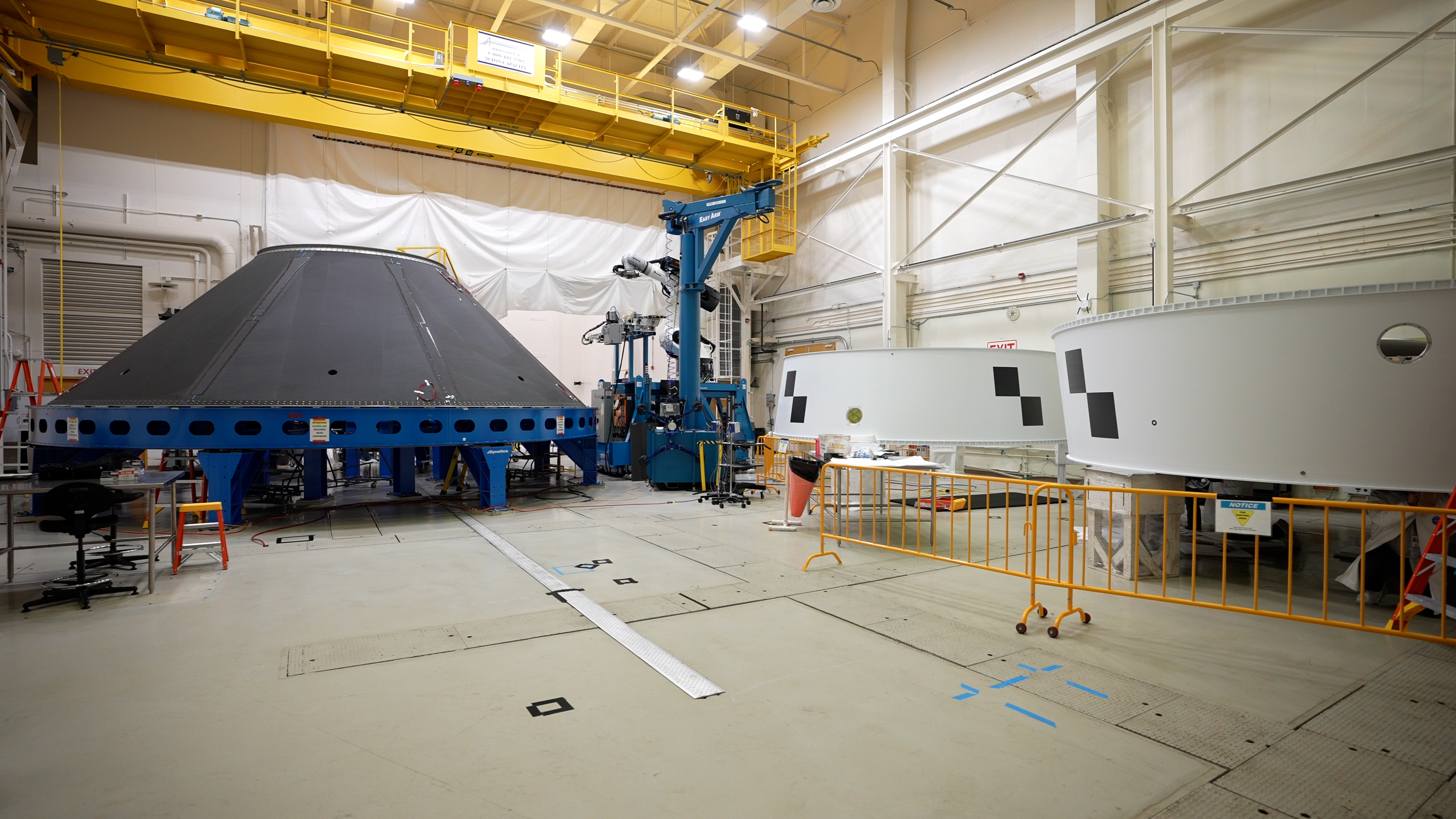Augmented Reality Speeds Spacecraft Construction at NASA Goddard
Technicians armed with advanced measuring equipment, augmented reality headsets, and QR codes virtually checked the fit of some Roman Space Telescope structures before building or moving them through facilities at NASA’s Goddard Space Flight Center in Greenbelt, Maryland. “We’ve been able to place sensors, mounting interfaces, and other spacecraft hardware in 3D space faster and […]
- Augmented reality tools have helped technicians improve accuracy and save time on fit checks for the Roman Space Telescope being assembled at NASA’s Goddard Space Flight Center in Greenbelt, Maryland.
- In one instance, manipulating a digital model of Roman’s propulsion system into the real telescope structure revealed the planned design would not fit around existing wiring. The finding helped avoid a need to rebuild any components.
- The R&D team at Goddard working on this AR project suggests broader adoption in the future could potentially save weeks of construction time and hundreds of thousands of dollars.
Technicians armed with advanced measuring equipment, augmented reality headsets, and QR codes virtually checked the fit of some Roman Space Telescope structures before building or moving them through facilities at NASA’s Goddard Space Flight Center in Greenbelt, Maryland.
“We’ve been able to place sensors, mounting interfaces, and other spacecraft hardware in 3D space faster and more accurately than previous techniques,” said NASA Goddard engineer Ron Glenn. “That could be a huge benefit to any program’s cost and schedule.”
Projecting digital models onto the real world allows the technicians to align parts and look for potential interference among them. The AR heads-up display also enables precise positioning of flight hardware for assembly with accuracy down to thousandths of an inch.
Using NASA’s Internal Research and Development program, Glenn said his team keeps finding new ways to improve how NASA builds spacecraft with AR technology in a project aiding Roman’s construction at NASA Goddard.
Glenn said the team has achieved far more than they originally sought to prove. “The original project goal was to develop enhanced assembly solutions utilizing AR and find out if we could eliminate costly fabrication time,” he said. “We found the team could do so much more.”
For instance, engineers using a robotic arm for precision measuring and 3D laser scanning mapped Roman’s complex wiring harness and the volume within the spacecraft structure.
“Manipulating the virtual model of Roman’s propulsion assembly into that frame, we found places where it interfered with the existing wiring harness, team engineer Eric Brune said. “Adjusting the propulsion assembly before building it allowed the mission to avoid costly and time-consuming delays.”
Roman’s propulsion system was successfully integrated earlier this year.
Equipped with a powerful telescope and advanced instruments, it aims to unravel mysteries of the universe and expand our understanding of cosmic phenomena. Roman is scheduled to launch by May 2027.
Credit: NASA’s Goddard Space Flight Center
Download this video in HD formats from NASA Goddard’s Scientific Visualization Studio
Considering the time it takes to design, build, move, redesign, and rebuild, Brune added, their work saved many workdays by multiple engineers and technicians.
“We have identified many additional benefits to these combinations of technologies,” team engineer Aaron Sanford said. “Partners at other locations can collaborate directly through the technicians’ point of view. Using QR codes for metadata storage and document transfer adds another layer of efficiency, enabling quick access to relevant information right at your fingertips. Developing AR techniques for reverse engineering and advanced structures opens many possibilities such as training and documentation.”
The technologies allow 3D designs of parts and assemblies to be shared or virtually handed off from remote locations. They also enable dry runs of moving and installing structures as well as help capture precise measurements after parts are built to compare to their designs.
Adding a precision laser tracker to the mix can also eliminate the need to create elaborate physical templates to ensure components are accurately mounted in precise positions and orientations, Sanford said. Even details such as whether a technician can physically extend an arm inside a structure to turn a bolt or manipulate a part can be worked out in augmented reality before construction.
During construction, an engineer wearing a headset can reference vital information, like the torque specifications for individual bolts, using a hand gesture. In fact, the engineer could achieve this without having to pause and find the information on another device or in paper documents.
In the future, the team hopes to help integrate various components, conduct inspections, and document final construction. Sanford said, “it’s a cultural shift. It takes time to adopt these new tools.”
“It will help us rapidly produce spacecraft and instruments, saving weeks and potentially hundreds of thousands of dollars,” Glenn said. “That allows us to return resources to the agency to develop new missions.”
This project is part of NASA’s Center Innovation Fund portfolio for fiscal year 2024 at Goddard. The Center Innovation Fund, within the agency’s Space Technology Mission Directorate, stimulates and encourages creativity and innovation at NASA centers while addressing the technology needs of NASA and the nation.
To learn more, visit: https://www.nasa.gov/center-innovation-fund/
By Karl B. Hille
NASA’s Goddard Space Flight Center, Greenbelt, Md.
Share
Details
Related Terms
What's Your Reaction?



















.jpg?#)

































